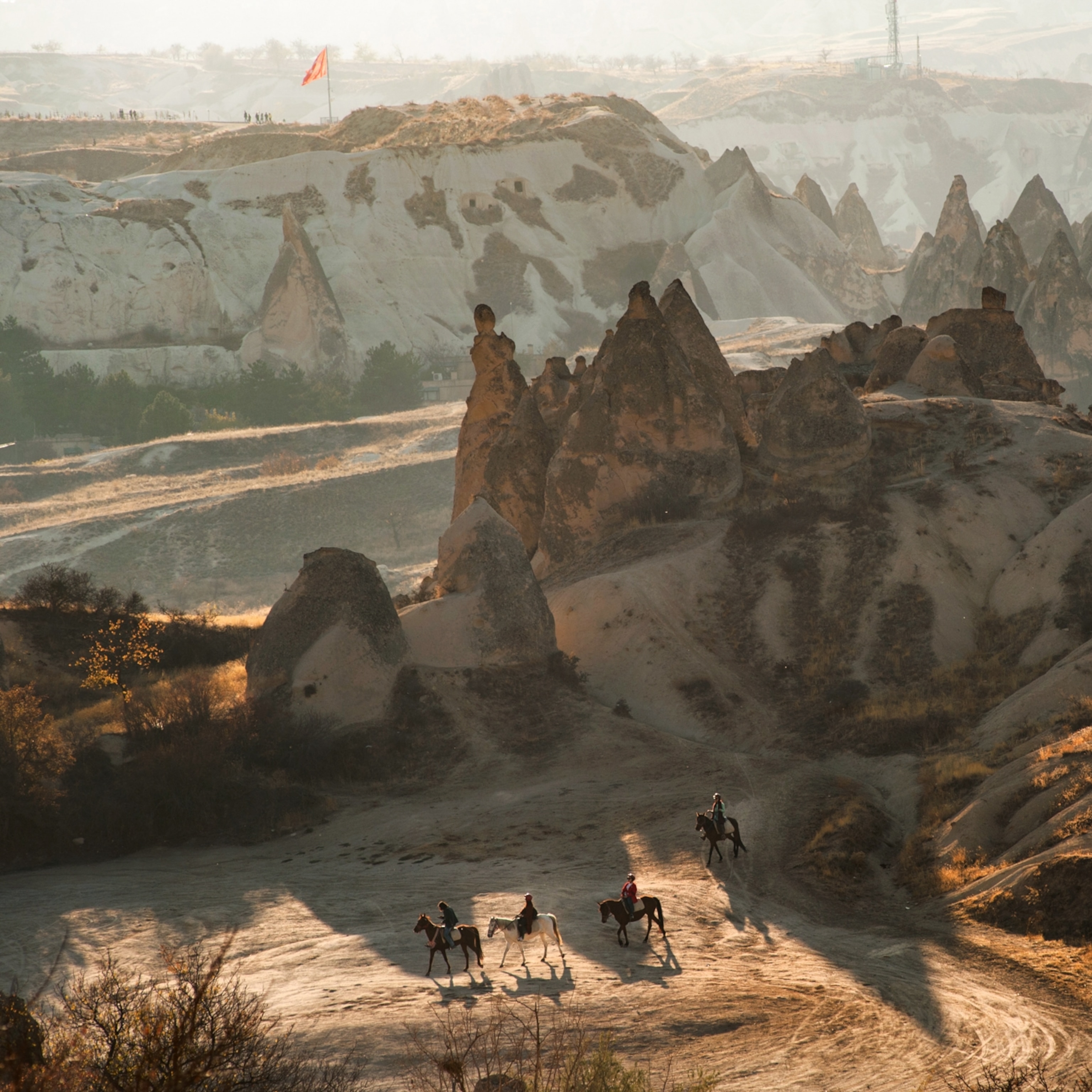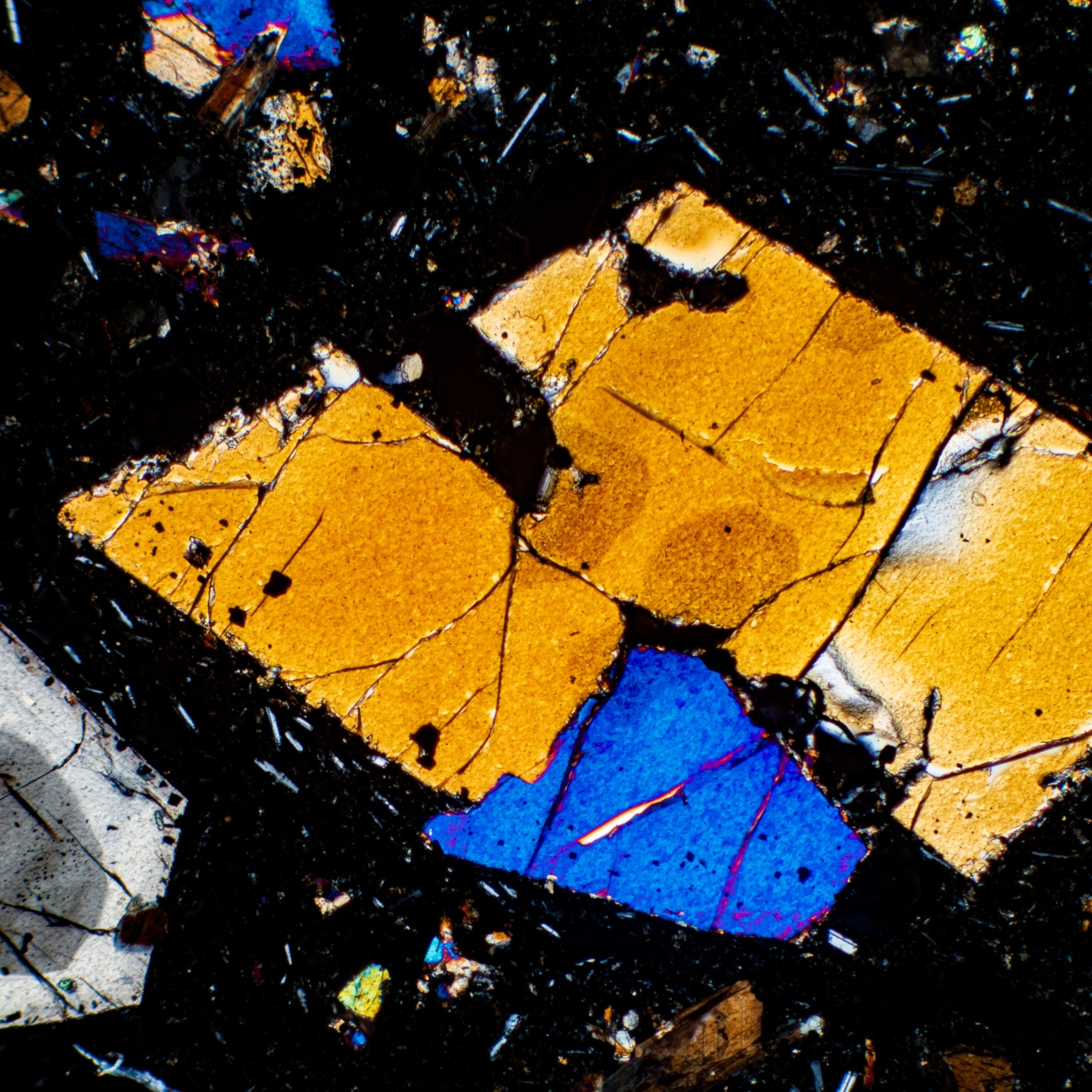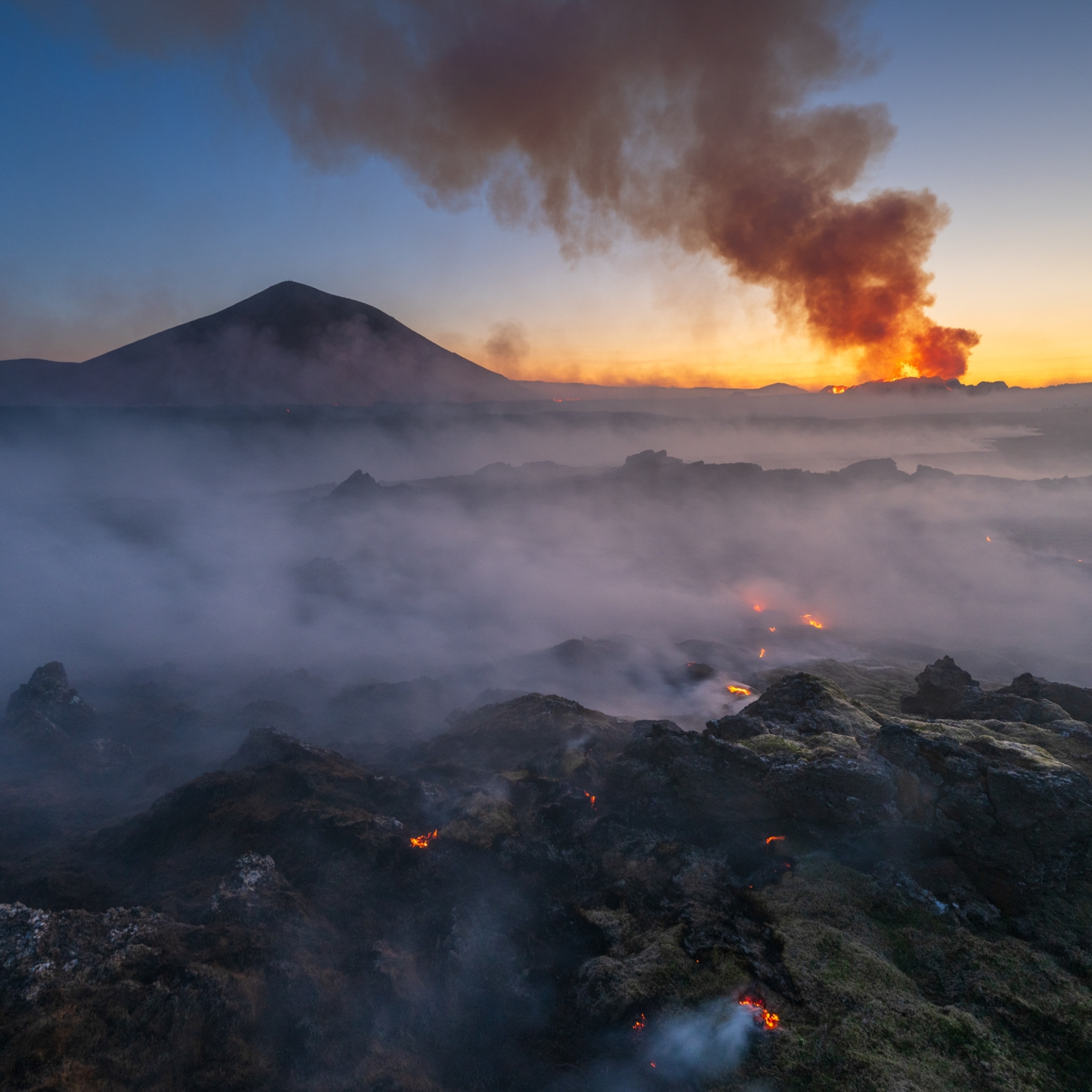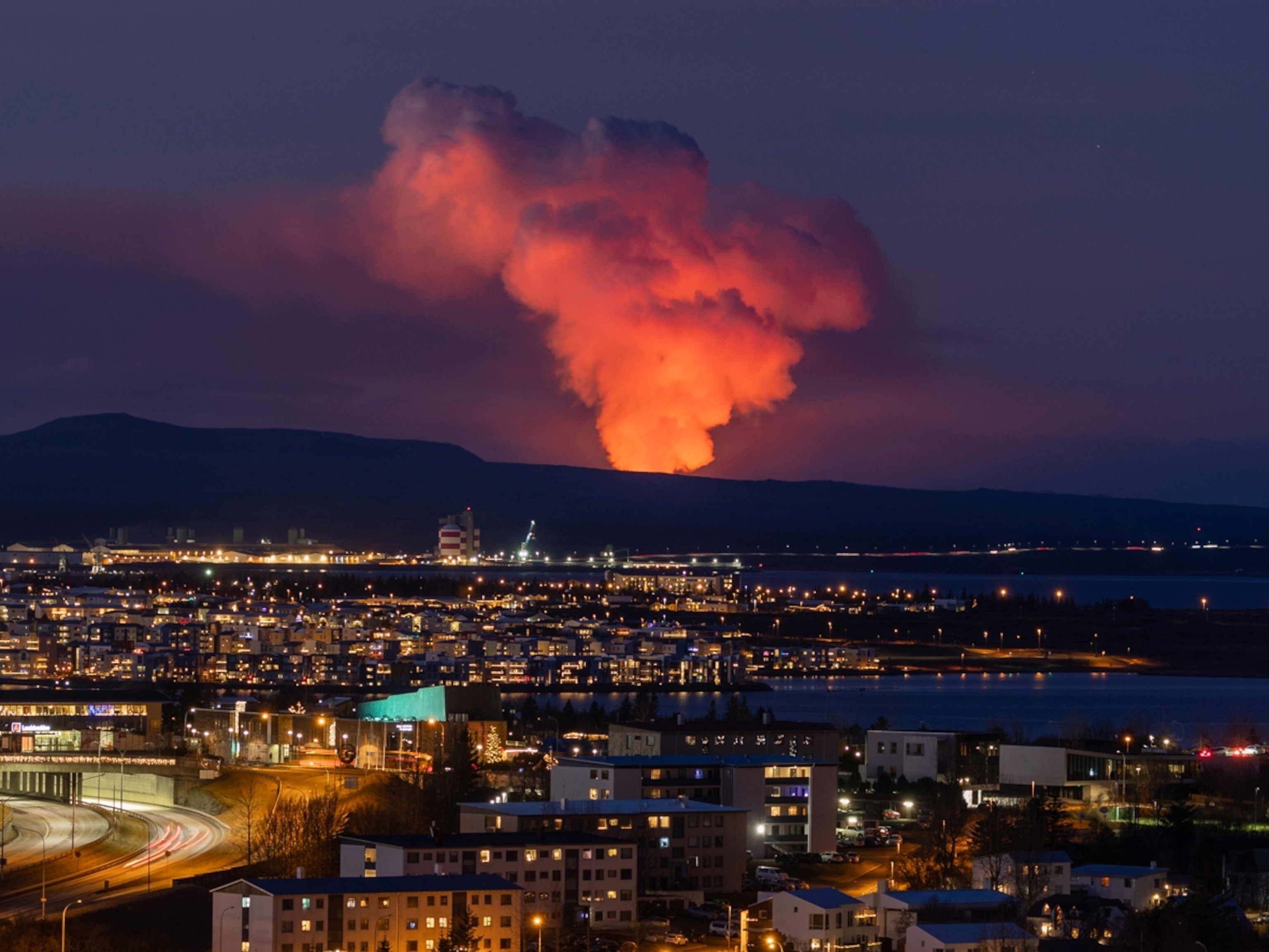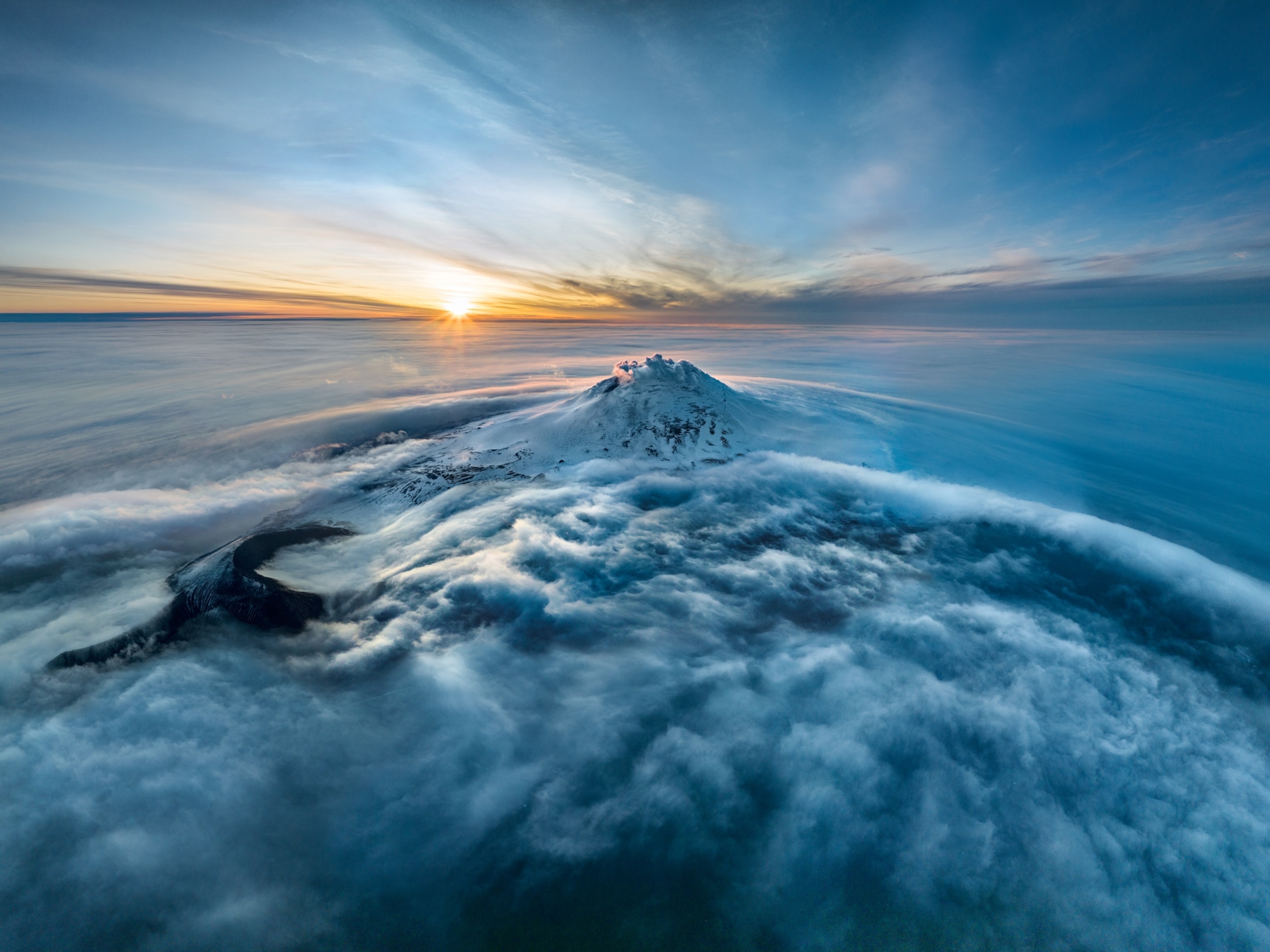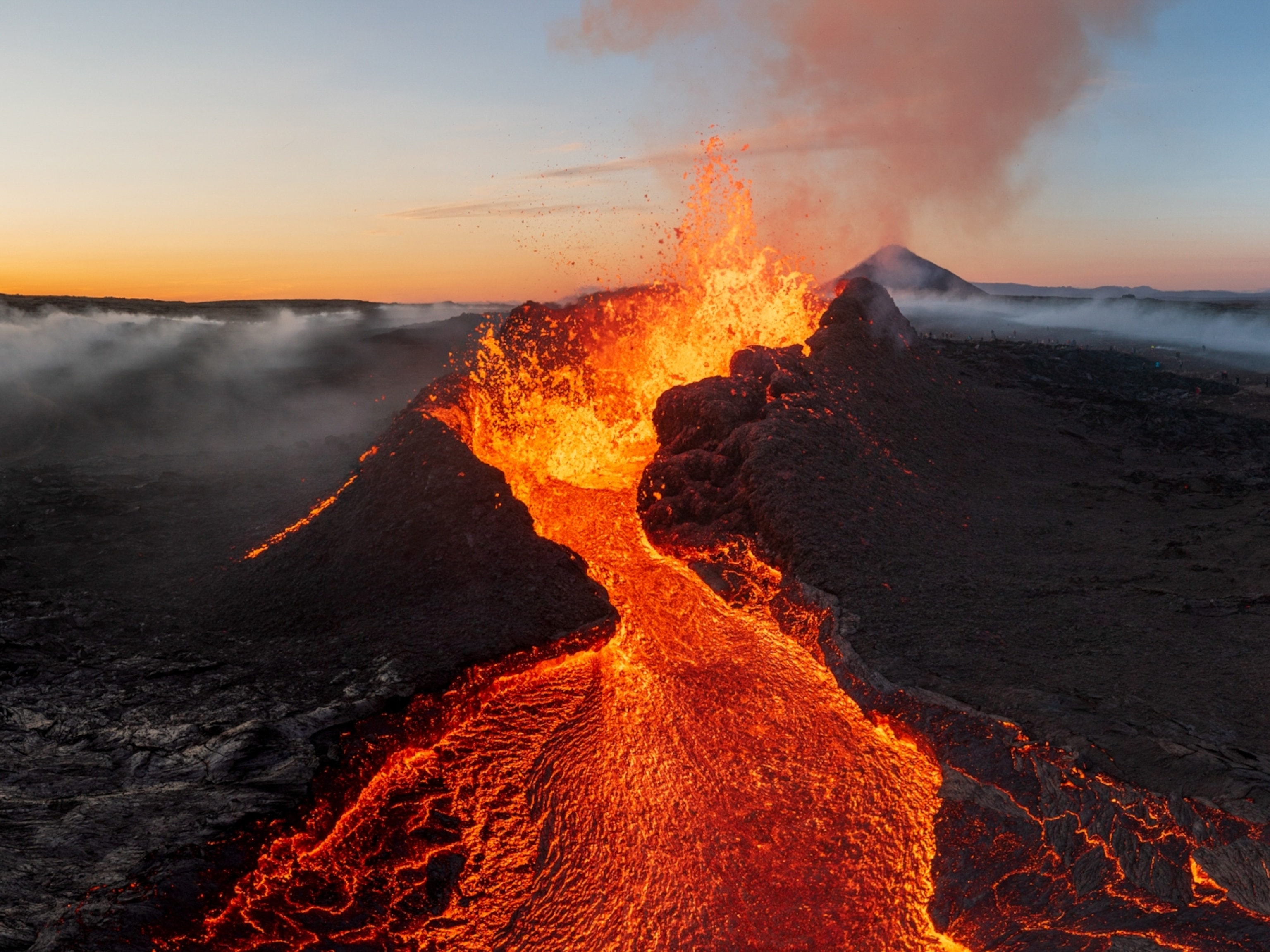
Volcanoes blow smoke rings. Here's how they do it.
These ghostly hoops have been spotted above volcanic events around the world. But how they form has long been a mystery.
Volcanoes are famed for their furious fireworks—from thundering pyroclastic flows to scorching rivers of lava. They can, however, be just as awe-inspiring during their quieter moments, like when a simmering peak blows a lazy smoke ring into the sky.
Over the last few days, Italy’s vertiginous Mount Etna has been doing just that, exhaling myriad ephemeral hoops up into the azure.

Naturally, everyone who has witnessed this party trick wants answers: how on Earth are volcanoes crafting smoke rings—and why are only some of these angry mountains capable of making them?
Such apparitions have long been spotted flitting above multiple volcanoes across the world, but it wasn’t always clear how they were being made. Although they can be hundreds of feet across, the rings are short-lived and unpredictable, making them difficult to study. But in 2019, a team of scientists led by Fabio Pulvirenti—then a senior fellow at NASA’s Jet Propulsion Laboratory and now at Henan Polytechnic University in China—decided to do the next best thing and simulate them on a computer.
(How volcanoes form—and why they erupt.)
Their results, published in the journal Scientific Reports in 2023, revealed that these smoke rings are made much in the same way that cigarette smokers blow rings—and how smoke cannon toys eject fog through a narrow circular opening. With all three, there needs to be a substantial amount of vapor collected and then expelled quickly to form a decent ring.
It certainly looks impressive. But in the end, it all comes down to some pretty straightforward physics.
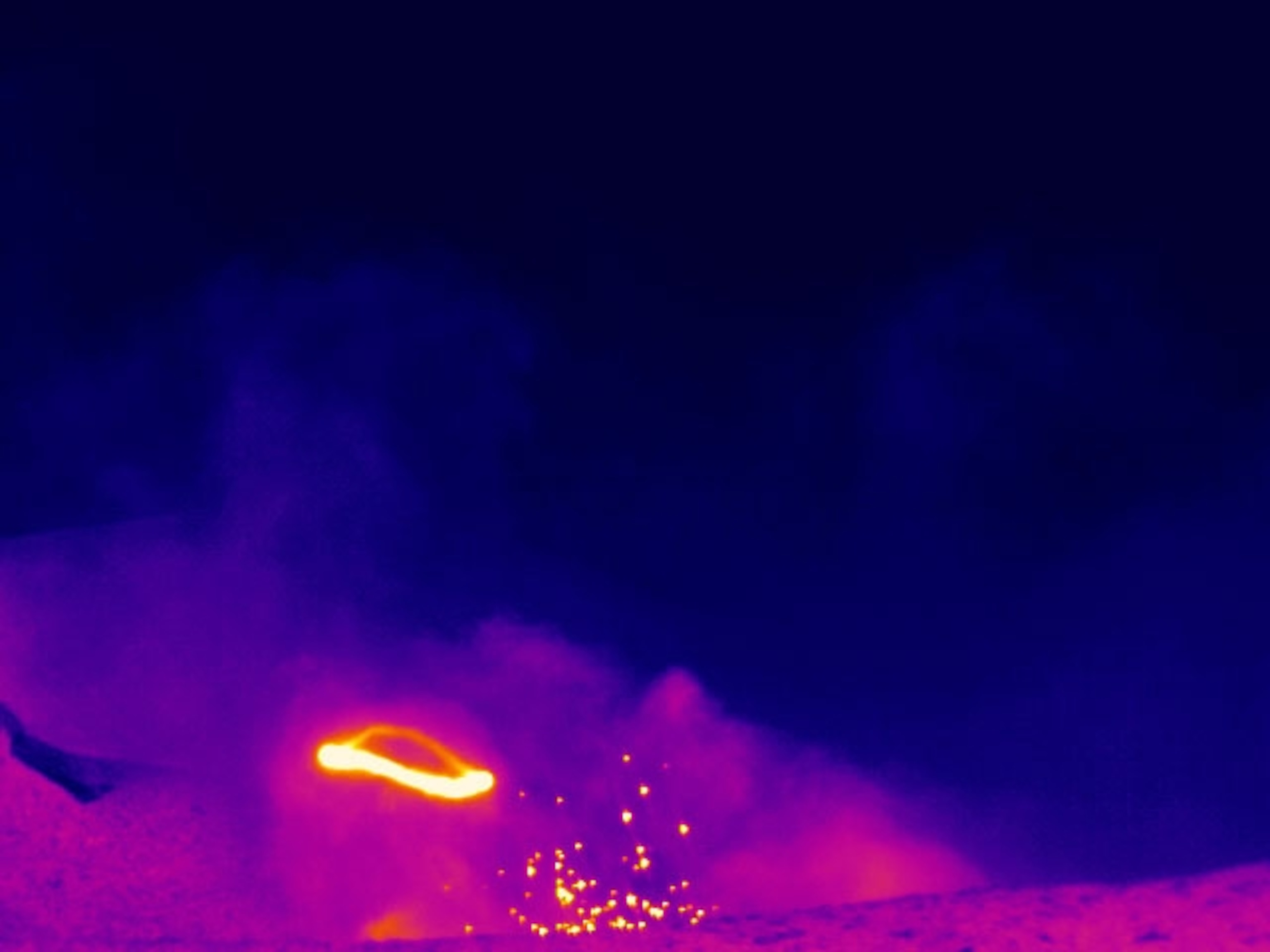



What is a volcanic smoke ring?
Despite the name, volcano smoke rings aren’t made of smoke, explains Boris Behncke, a volcanologist at Italy’s National Institute of Geophysics and Volcanology who was not involved with the 2019 research. Instead, the volcanic variants are largely made of condensed gases, predominantly water vapor, escaping from the magma and propelled from the volcano’s vent.
Strong winds can prevent rings from forming. But in their absence, gossamer circlets forged from a decent supply of volcanic vapor—which is warmer and less dense than the surrounding air—can drift toward the sky and start expanding. Eventually, when they shed most of their vapor, the rings vanish from sight.
But only some volcanoes seem able to make smoke rings, and only at certain times. Back when Pulvirenti first learned about them in 2013, he found that the scientific literature offered no substantive answers. So, when his curiosity became too much to bear, he recruited some colleagues and took a crack at solving the mystery.
(The world’s loneliest volcano may hold something truly rare.)
The team perused plenty of observations of volcanic smoke rings, seeing how high they rose, how fast they moved, how quickly they cooled, how much their compositions varied, and how frequently they contained ash. The scientists also read up on how magmatic gases migrated through and escaped from volcanic conduits, and they dove into the complex physics of vortex formation in fluids, gleaned from laboratory experiments.
They then plugged all their findings into a computer model. By fiddling with the build-up of pressure within the conduit, as well as the geometry of the virtual volcano’s vent, the team worked out just what it takes to make smoke rings.
How do smoke rings form—and why don’t all volcanoes do it?
As magma rises through the conduit, the surrounding pressure drops, allowing dissolved gases to emerge as bubbles. If the magma is not too viscous, bubbles can merge into singular pockets of pressurized gas. When they approach the vent, these gas pockets can violently depressurize and explode, propelling hot vapor upward, sometimes at near-supersonic speeds.
Vapor ejected from the vent then drags on the volcano’s rocky sides, causing the ball of gas to roll up around the edges. (Slow-motion videos show the exact same thing happening with smoke cannon toys.) Then, as the rolled-up vapor ring meets the cold atmosphere, it chills, decelerates, condenses, and becomes visible, a bit like the contrails of airplanes.
Crucially, to make rings, a volcanic vent must be fairly circular, and the sides of the vents have to be the same height. If the vent is too irregularly shaped or broken up, the ring may be severely warped, unstable, or won’t form at all.
(These crystal lava shards are a snapshot of a volcano’s underworld.)
Benjamin Simons (a volcanologist at the University of Auckland in New Zealand back when Pulvirenti presented his team’s results in 2019) has seen smoke rings at several persistently active volcanoes, including Mount Yasur in Vanuatu. Most of the rings he saw escaped from skylights, roughly circular natural openings perched above the level of volcanic vents that are open to the “beautiful night glow of magma” below, he says.
When small puffs of volcanic gas were forced through these narrow openings, smoke rings appeared. They rose ponderously, he explains, rarely having the power to leave the summit crater before fading away. The results of Pulvirenti’s computer model match with Simons’ own observations; the more circular the opening, “the more likely it is to produce a smoke ring,” he says.
Pulvirenti’s model explains why smoke rings aren’t seen at every volcano all the time, since the rings require such precise conditions to form. Even when these conditions are met, however, smoke rings don’t always appear, suggesting that there is more to the gassy pandemonium within volcanoes than we currently know.
Related Topics
You May Also Like
Go Further
Animals
- Octopuses have a lot of secrets. Can you guess 8 of them?
- Animals
- Feature
Octopuses have a lot of secrets. Can you guess 8 of them? - This biologist and her rescue dog help protect bears in the AndesThis biologist and her rescue dog help protect bears in the Andes
- An octopus invited this writer into her tank—and her secret worldAn octopus invited this writer into her tank—and her secret world
- Peace-loving bonobos are more aggressive than we thoughtPeace-loving bonobos are more aggressive than we thought
Environment
- This ancient society tried to stop El Niño—with child sacrificeThis ancient society tried to stop El Niño—with child sacrifice
- U.S. plans to clean its drinking water. What does that mean?U.S. plans to clean its drinking water. What does that mean?
- Food systems: supporting the triangle of food security, Video Story
- Paid Content
Food systems: supporting the triangle of food security - Will we ever solve the mystery of the Mima mounds?Will we ever solve the mystery of the Mima mounds?
- Are synthetic diamonds really better for the planet?Are synthetic diamonds really better for the planet?
- This year's cherry blossom peak bloom was a warning signThis year's cherry blossom peak bloom was a warning sign
History & Culture
- Strange clues in a Maya temple reveal a fiery political dramaStrange clues in a Maya temple reveal a fiery political drama
- How technology is revealing secrets in these ancient scrollsHow technology is revealing secrets in these ancient scrolls
- Pilgrimages aren’t just spiritual anymore. They’re a workout.Pilgrimages aren’t just spiritual anymore. They’re a workout.
- This ancient society tried to stop El Niño—with child sacrificeThis ancient society tried to stop El Niño—with child sacrifice
- This ancient cure was just revived in a lab. Does it work?This ancient cure was just revived in a lab. Does it work?
- See how ancient Indigenous artists left their markSee how ancient Indigenous artists left their mark
Science
- Jupiter’s volcanic moon Io has been erupting for billions of yearsJupiter’s volcanic moon Io has been erupting for billions of years
- This 80-foot-long sea monster was the killer whale of its timeThis 80-foot-long sea monster was the killer whale of its time
- Every 80 years, this star appears in the sky—and it’s almost timeEvery 80 years, this star appears in the sky—and it’s almost time
- How do you create your own ‘Blue Zone’? Here are 6 tipsHow do you create your own ‘Blue Zone’? Here are 6 tips
- Why outdoor adventure is important for women as they ageWhy outdoor adventure is important for women as they age
Travel
- This royal city lies in the shadow of Kuala LumpurThis royal city lies in the shadow of Kuala Lumpur
- This author tells the story of crypto-trading Mongolian nomadsThis author tells the story of crypto-trading Mongolian nomads
- Slow-roasted meats and fluffy dumplings in the Czech capitalSlow-roasted meats and fluffy dumplings in the Czech capital
